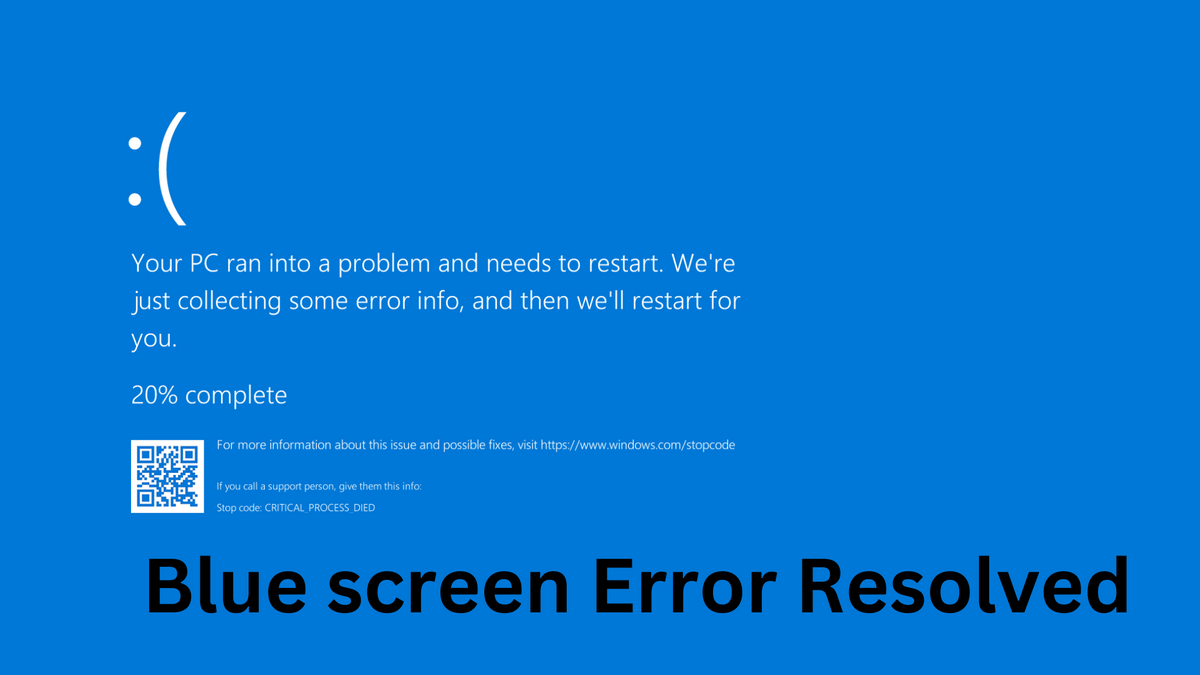
In this article, we will discuss all the blue screen issues of windows such as the cause for this error and how we can fix this error easily. We will also discuss how to Recover All Data Lost Due to BSOD Errors. The Windows blue screen of death is a very common Windows issue. This is an error that we all make from time to time.
Know About Bluescreen Error
Generally, a blue screen of death is a warning that appears when your computer interrupts operations and displays this warning on a blue screen. It's formally known as a "Stop error."
And STOP Code for Blue Screen of Death includes the cause of death. Do you know these STOP codes zero in on the underlying cause? More power to you if you can copy these Windows stop Code and look up the cause and fix it. Most of the time, Windows will restart and correct any underlying errors without your intervention.
Causes for Windows Bluescreen Error
A blue screen of death on Windows can occur for a variety of reasons. Some reasons are the following-
- If there is insufficient free space on your computer's or laptop's hard disc because Windows 10 requires 2 to 10 Gb of free space on your system disc to function properly.
- If the firmware was damaged or an incompatible version of BIOS was installed.
- If device drivers that were incompatible with the operating system were installed.
- Sometimes the Windows registry was damaged or deleted, or cleaning operations deleted system keys inadvertently.
- Sometimes Antivirus software is the reason because it may prevent access to system files or delete critical registry keys.
- This error occurs during the backup software's operation.
- It can also be caused by a Windows update.
How to Resolve Bluescreen Error
Steps to Resolve the Windows Blue Screen of Death Error
Step 1: After restarting the computer then navigate to the "Startup options" screen. To accomplish this, hold While holding down the "Shift" button, click Start, and then "Restart."
Step 2: Then Select "Troubleshoot" from the startup options.
Step 3:After clicking on the troubleshooting option, open the "Advanced options" window by clicking on it.
Step 4: On the Advanced Options screen, select "System Restore" and then press the "Next" button in the System Restore window.
Step 5: Now, choose a restore point and click "Next."
Step 6: Finally, click "Finish," which will start the system restoration process. When the process is finished, the computer will restart and return to the desktop.
Conclusion
Windows bluescreen errors can be frustrating and confusing. However, by following the easy steps in this guide, you should be able to resolve the issue quickly and without too much trouble. We took reference from Norton DNS to help provide an accurate solution for users experiencing these errors. If you are still having problems after trying these steps, please don’t hesitate to contact us for further assistance.
